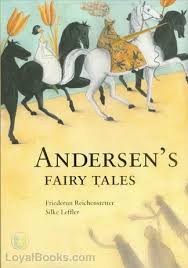The Swineherd
byThe Swineherd begins with a Prince who offers his heart not through gold or conquest, but through beauty rooted in nature. He brings a rose that blooms just once every five years and a nightingale whose song could soften the heaviest sorrow. These gifts, crafted by the earth and cherished by poets, are rejected outright by the Emperor’s daughter. She finds them unimpressive because they are not manufactured, not glittering with artificial splendor. Her interest lies not in wonder, but in spectacle. The Prince, wounded yet proud, sees in her response a truth many overlook—that some hearts crave novelty more than sincerity. So, he hides his title, dons the clothes of a commoner, and takes a humble post within the palace walls. Here begins a clever plan not for revenge, but revelation. The Prince aims to test where her values truly lie, not through words but through invention and allure.
As a disguised swineherd, the Prince creates a magical pot—one that sings and reveals what meals are being made across the city. This invention, though simple, captivates the Princess more than his rare rose ever did. She becomes obsessed with it, not for its purpose, but for its novelty. He offers it, but only in exchange for ten kisses. She hesitates but caves in, shielding the exchange from public view with the help of her maids. The kiss, meant to be sacred and reserved, is traded away like currency. Then comes another marvel: a music box that plays melodies sweeter than any courtly performance. This, too, is irresistible. But now the price is higher—one hundred kisses. And again, she agrees. With each kiss, the Prince confirms what her rejections had hinted at—curiosity rules over character. Her dignity dissolves not through malice, but in her eager pursuit of amusement.
As the Princess fulfills the trade, hidden away behind her ladies-in-waiting, the act draws attention. Whispers turn into rumors, and soon, the Emperor himself stumbles upon the scene. Shocked by what he sees, he demands answers. Upon learning of the bargain—his daughter giving away kisses for trivial entertainment—he casts both her and the swineherd out of the palace. What was meant to be a hidden indulgence becomes a public disgrace. Only then does the Prince shed his disguise, revealing who he truly is. He reminds the Princess that she had once rejected pure and natural beauty but gave herself freely to things of no true worth. Her face pales as she realizes her mistake. But the Prince walks away, leaving her not just outside the palace, but outside his heart.
This tale is more than a story of love denied—it’s a reflection on how value is perceived and misjudged. The Prince’s natural gifts had no price because they were genuine. Yet they were discarded as worthless. His crafted inventions, on the other hand, were shallow distractions, but their novelty held power. Through this, Andersen illustrates how easily society becomes enchanted by glitter while overlooking meaning. The Princess isn’t punished for her curiosity—she is punished for her failure to see what truly matters. This moral speaks quietly but firmly: treasures of substance are often ignored in favor of passing thrills. And when dignity is traded for entertainment, the cost is not just kisses—it is character.
From a modern standpoint, the story holds striking relevance. We live in an age where attention is currency, and depth is often overshadowed by spectacle. The Princess mirrors how people chase trends, forgetting what genuinely moves the soul. Meanwhile, the Prince becomes a symbol of withheld wisdom—a reminder that those who appear common may carry extraordinary gifts. Andersen doesn’t vilify the Princess outright. Instead, he lays bare the consequences of her choices. In doing so, he encourages readers to ask: what do we value, and at what cost?
There’s also a subtle message in how the Prince responds. He doesn’t seek revenge, only truth. His method is harsh but fair. He offers choice after choice, and each one is accepted not under pressure, but under fascination. That detail is key. He doesn’t force the Princess to act against her will—he simply lets her show who she is. And when the moment of reckoning arrives, he doesn’t gloat. He walks away with his pride intact, leaving her to reflect not on what she lost, but on who she could have been.
In the end, The Swineherd stands as a tale about perception, worth, and the dangers of misplaced desire. True richness often lies beneath quiet surfaces. Andersen challenges us to question what we praise and what we dismiss. And more importantly, he reminds us that not all who appear lowly are unworthy—sometimes, they are only hiding the depth that others fail to see.

